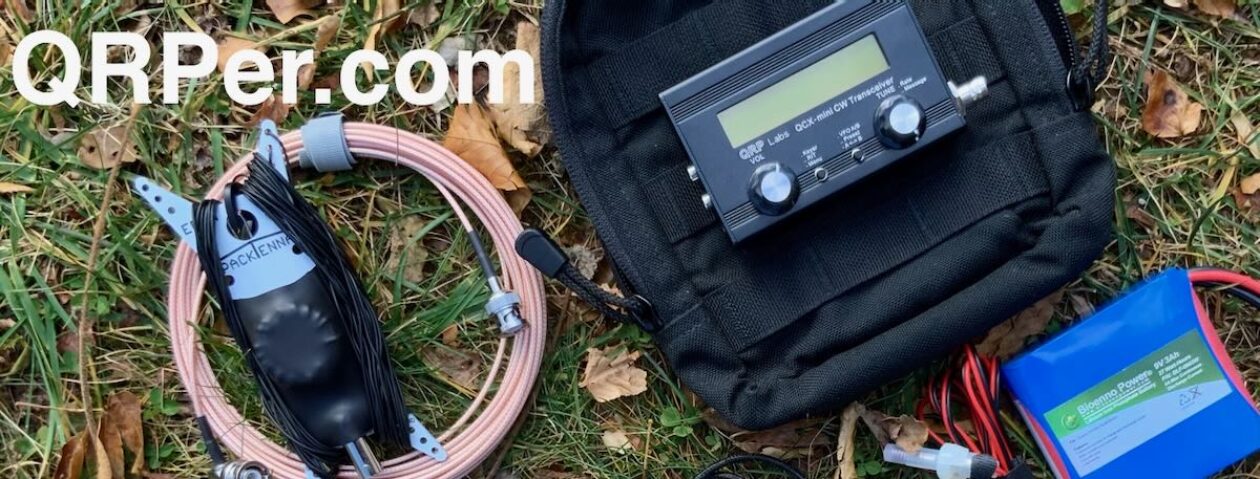By Steven Krumm (KV4AN)
“Glamping,” noun, describes a style of camping with amenities and resort-style services not usually associated with traditional camping.
We recently went on a family “glamping” trip to Pickwick Landing State Park (US-2967) in middle Tennessee. Pickwick Landing State Park is located at Pickwick Dam along the Tennessee River in Hardin County, Tennessee. According to the park’s website, it contains 1,416 acres of “forested hills and hollows” and has excellent water recreation opportunities. The park also has a lodge, restaurant, cabins, marina, golf course, swimming pools, and campground. Also, nearby is Shiloh National Military Park, which is another POTA opportunity.
Sounds like a perfect spot for a family mini-vacation and a Parks on the Air (POTA) activation!
We stayed in one of the lake front cabins and I paradoxically decided to bring my most spartan field radio, the MTR3B-V4 “Currahee” Mountain Topper. The MTR3B-V4 is a miniature three band (40, 20, and 15) QRP CW transceiver. This was my first activation with the Mountain Topper and I was excited to try it out. I paired this with a Chameleon Antenna Basic Vertical (CHA BV) and a prototype Faraday strip radial system. The CHA BV is a resonant vertical which uses a 17-foot telescopic whip for 20 and above and a loading coil for 30 and 40 meters.
After setting up the antenna beside the cabin, I tuned it for resonance on 40 meters, where I expected to start my activation at 7:00pm (0000 UTC).
 I set up the operating location on a little rolling side table next to a comfortable chair and waited.
I set up the operating location on a little rolling side table next to a comfortable chair and waited.
At 7:01 pm, I started calling “CQ POTA” and got a quick response, but it took over a half hour to get six more QSOs. I noticed on the POTA app that most of the spots were still on 20 meters, so I may have started too early on 40. However, being stubborn (and maybe a little lazy to not want to go outside and retune the antenna), I stayed on 40 and about a half hour later, when it started to get dark, I picked up another seven QSOs in 15 minutes.
Having achieved a successful activation, I decided to shut down for the evening and start again on 40 in the morning.
 A little after 6:00 am the next morning, I started operating again and in 20 minutes I picked up another nine QSOs. I took a break from operating for breakfast and hiking with the grandkids (we hiked almost 3 miles). A few hours later, I switched to 20 meters and finished out the activation with a total of 44 QSOs, including nine Park-to-Park (P2P) QSOs.
A little after 6:00 am the next morning, I started operating again and in 20 minutes I picked up another nine QSOs. I took a break from operating for breakfast and hiking with the grandkids (we hiked almost 3 miles). A few hours later, I switched to 20 meters and finished out the activation with a total of 44 QSOs, including nine Park-to-Park (P2P) QSOs.
I thought it was interesting that most of the QSOs were clustered in an arc from north to southeast. Your guess is as good as mine as to why when using a vertical antenna.
 I don’t think my glamping trip was quite what the designer of the Mountain Topper transceiver had in mind, but I was very happy with its performance. The receiver was sensitive, the audio was excellent, and the memory keyer worked flawlessly.
I don’t think my glamping trip was quite what the designer of the Mountain Topper transceiver had in mind, but I was very happy with its performance. The receiver was sensitive, the audio was excellent, and the memory keyer worked flawlessly.
I operated for a total of around three hours and the 1200mAH Li-ion battery was still providing enough voltage to the radio that it was putting out 4.5W at the end. The side tone was too low as it was competing with the grandkids playing (does that count as QRM?), and after I got home, I turned it up a little for next time.
This POTA activation showed you don’t have to “rough it” or leave the family behind to have a successful activation. I promise that next time I’ll sit on a rock or something when activating…
Gear Used
Note: All Amazon and CW Morse links are affiliate links that support QRPer.com at no cost to you.





























































